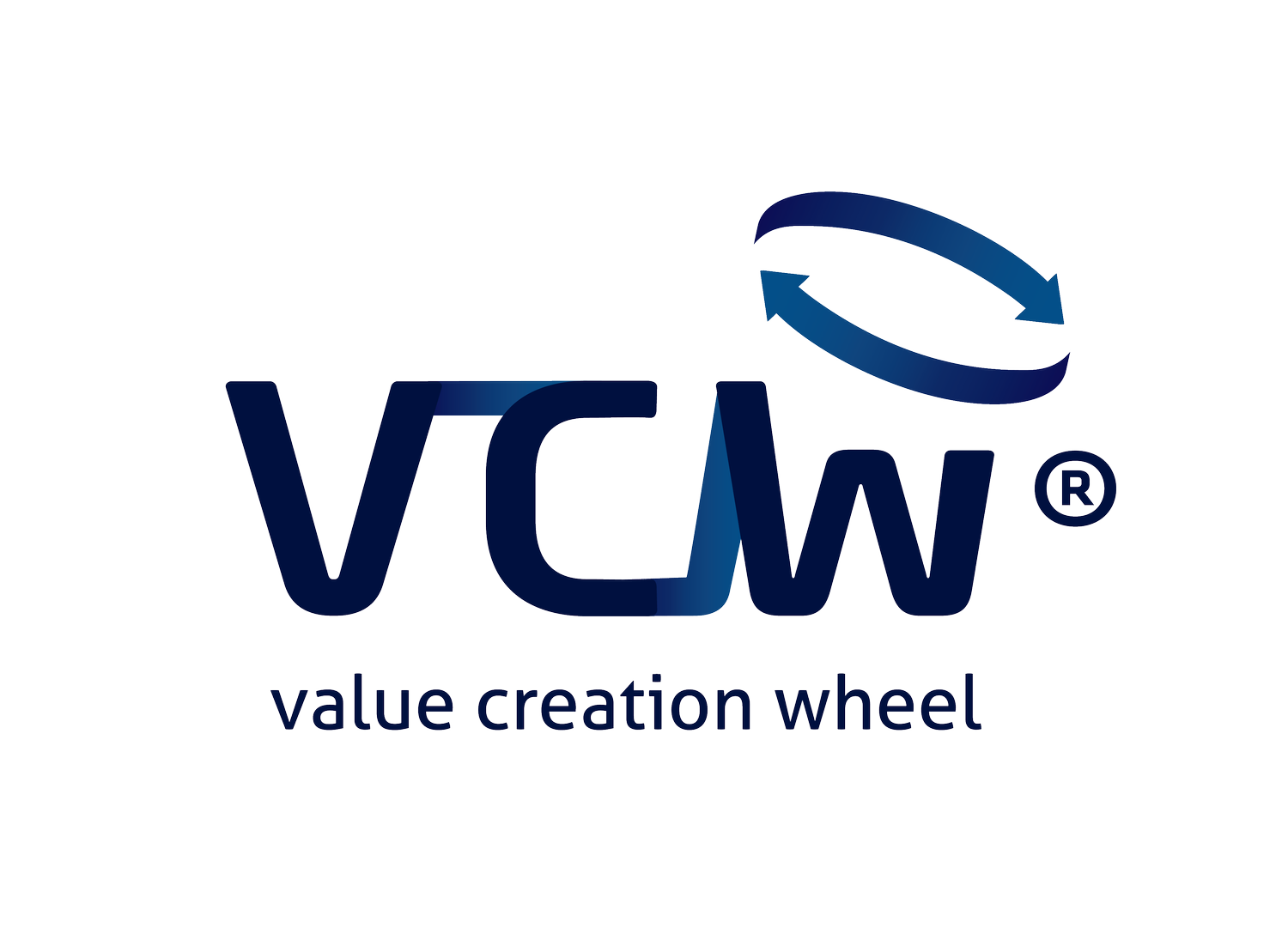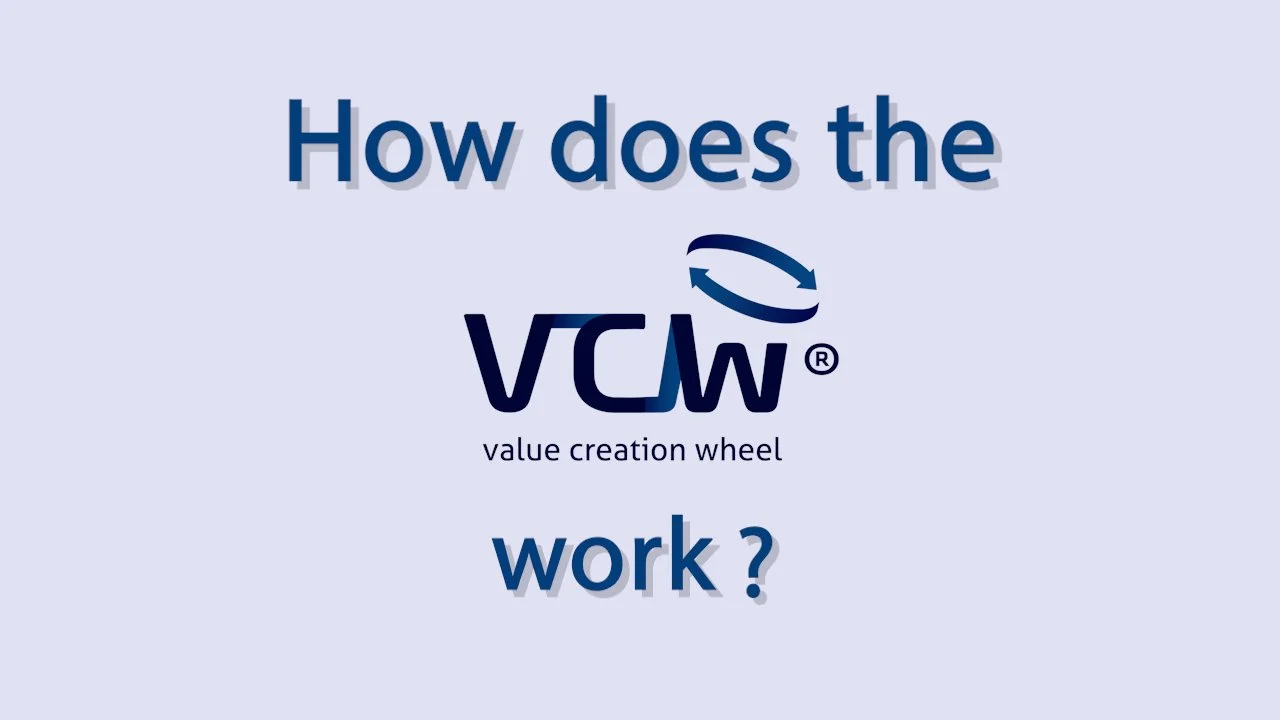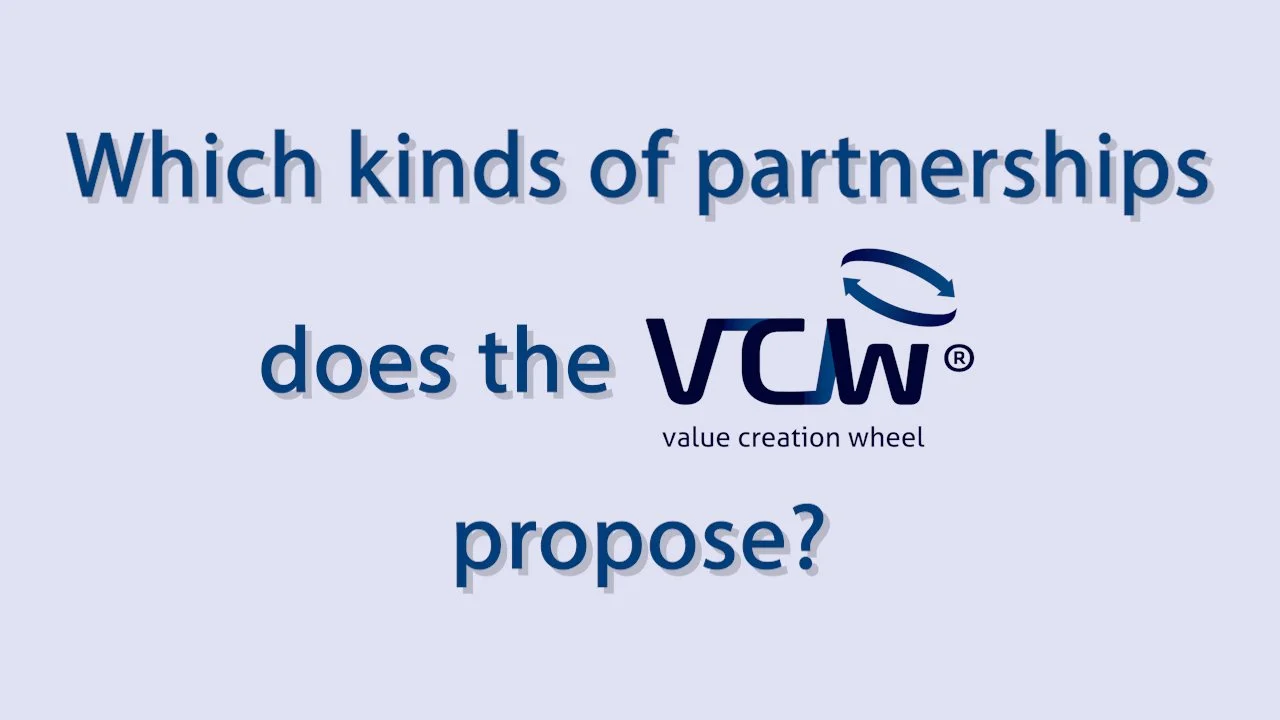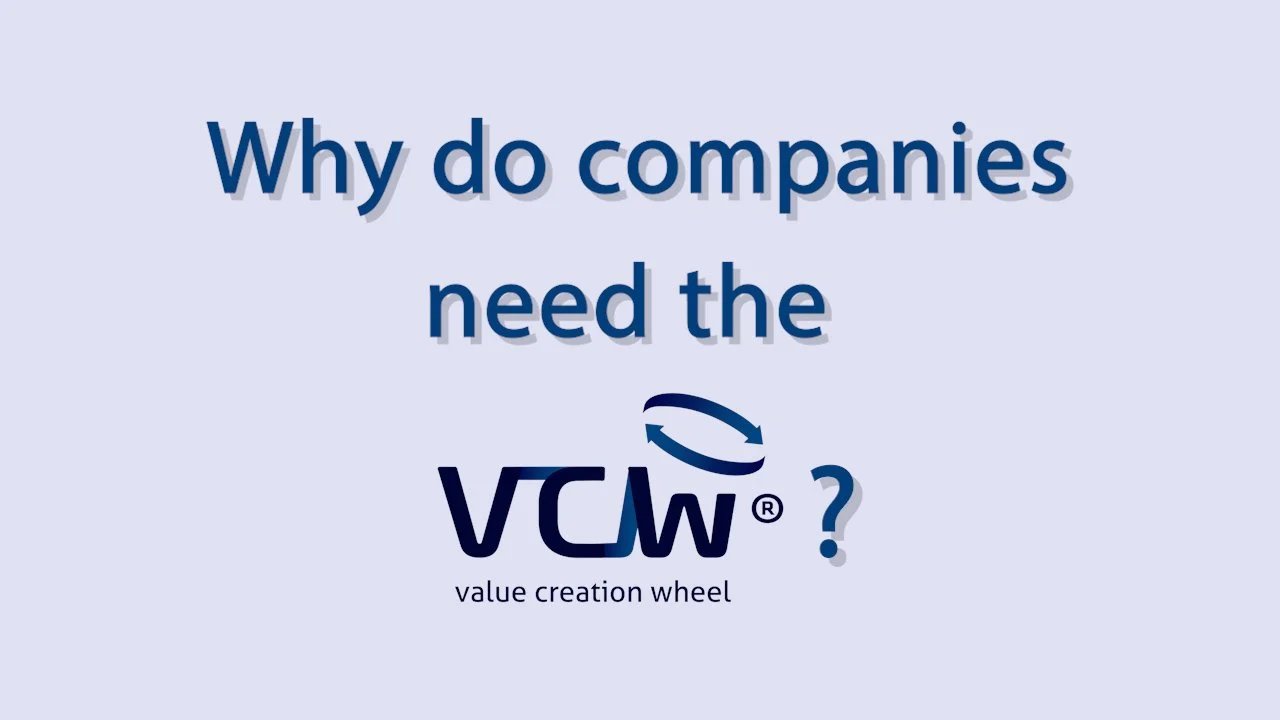
Frequently asked questions.
What makes the VCW unique?
-
While Design Thinking (DT) projects are very useful for generating ideas, the VCW is very useful for generating solutions. This explains why some argue that the VCW is a more advanced version of DT or a framework which integrates and/or complements DT.
The VCW has some similarities with DT. It is transversal across problems and industries, is an agile framework, uses open-innovation and co-creation, and is inspired by creativity, idea generation and prototyping.
However, the VCW presents major differences:
First, the VCW only addresses REAL problems/challenges. Solutions will be REALLY implemented by the end of the process. As such, the Key Decision Makers (KDMs) are deeply involved. They are the ones launching the problem/challenge which needs to be solved, select ideas and rank the “must have” & “nice to have” filters, and finally are directly involved in the implementation of the final solution(s).
Second, the VCW is stakeholder-centric (rather than customer-centric) and presents solutions which respect the perspectives of the different stakeholders.
The VCW is a meta framework which can incorporate a wide range of solutions and/or frameworks from different fields. The VCW does not impose its own frameworks, tools, or filters.
Finally, the VCW is supported by criteria/filters, while combining the input of angels and devils advocate, belief and skepticism, bottom-up and top-down perspectives. It allows the use of “Yes & No”, “And” & “But”.
-
The VCW creates value by offering unique solutions:
The VCW only works in problems/challenges supported by the Key Decision Makers. A KDM is defined as:
Someone, or a group of people (KDMs), who is committed and has the power to solve a challenge/problem at the organizational and/or individual level.
Has access to critical resources, i.e. the 3Ms (Manpower, Minute and Money).
Is involved in the solving the challenge/problem and, consequently, in the VCW process, because they are the only ones who can implement a solution and define the real challenge/problem. consensus concerning the problem/challenge to address, filters/criteria and ideas/solutions,
The VCW discovers customized, consensual and implementable solutions (Go/No-Go), which are co-created and supported by the key decision makers and a wide range of stakeholders:
Finds consensus concerning the problem/challenge to address, filters/criteria and ideas/solutions,
Finds the right bridge between a wide range of individuals:
different key decision makers
diferent internal and external stakeholders,
supporters and divergent thinkers (e.g. devil’s advocate, skeptical people, laggards, late-adopters, children and/or elderly people),
The VCW creates value while saving resources in the problem-solving process through:
Involving since the begining of the process the KDMs on critical steps:
defining the problem/challenge, 3Ms, diagnosis & KPIs,
analysing solutions and filters
implementation.
Purifying, organizing, separating, selecting and prioritizing:
Problems,
Ideas/solutions: i.e. direct answers to the challenge/problem to be solved (phase typically often supported by creativity)
Filters/criteria: i.e. choice criteria related to the selection of the ideas/solutions to solve the challenge/problem (phase typically supported by rationality).
Conducting individual VCWsprints & combining multiple VCWsprints.
Managing the 3Ms (Manpower, Minute, Money).
Achieving efficiency and effectiveness (e.g., predicting future mistakes/failures, continuous improvement, optimizing resources, improving productivity)
The VCW solves complex challenges and a wide range of paradoxes.
The VCW has been used to solve high complex challenges, such as:
paradox of choice,
limited or lack of choice,
paradox market-pull versus tech-push,
paradox global versus local.
The VCW has unique attributes:
The VCW is a meta-framework which is simultaneously structured and agile, rational and creative, and does not impose pre-established solutions or frameworks.
Follows a structured-agile MAP approach (Maximize, Analyze, Prioritize),
Does not impose or invalidate any idea/solution, filter/criteria or framework,
The VCW can partner with any organization and/or individual,
The VCW integrates and/or complements any existing solutions, established theories, tools or frameworks (e.g., organizational tools, 5Whys, situational analysis, RELQUAL, brainwriting, brainstorming, bank of ideas, design thinking, scorecards, BCG Matriz, McKinsey matrix, McRisk Assessment Matrix, SERPVAL, strategic triangle, SCAMPER, business model, business plan, financial plan, KPIs).
Complements and integrates different parts of any business puzzle, such as:
an idea/solution and an opportunity/need,
a value proposition and a business model,
the different parts ofa marketing plan.
Allows VCWsprints and frequent re-runs to revisit past steps.
The VCW is a transversal problem-solving framework, which can be applied to a wide range of problems/challenges across individuals, organizations, industries and countries.
The VCW combines theory and practice. The VCW varies along three dimensions of width, lenght and height regarding:
Theory: DIANA- Define, Increase, Assess, Narrow, Act. The DIANA theoretical framework provides a holistic approach to problem-solving, which supports scientific, technological, managerial, and societal advancements trough a wide range of scientific methodologies and managerial approaches.
Practice: TIAGO- Tap, Induce, Analyse, Ground, Operate. The TIAGO practical approach appears as a chameleon framework, completely customized to each specific case and problem, being supported by DIANA’s accumulated knowledge over two decades.
The variation along these three dimensions are dependent on the 3Ms (Manpower, Minute & Money) allocated to each project as well as on the existing databases of theory and practice, which will feed every VCW project.
KDMs
-
The VCW defines the Key Decision Maker (KDM) as someone who is committed and has the power to solve a challenge/problem at the organizational or individual level. To become a KDM is critical to have access to critical resources (e.g., 3Ms- Manpower, Minutes and Money) to solve the challenge. Depending on the context, everyone might be a Key Decision Maker (KDM). Examples of KDMs include Leaders, CEOs, Directors of Departments, Intra- and Entrepreneurs, Consumers and Ourselves while managing our personal life.
-
KDMs are unique, powerful and have an impact! KDMs are the only ones who can define a real challenge/problem and implement the solution(s). As such, they need to be involved in solving any challenge/problem and, consequently, in the VCW process. The VCW can help them to solve their challenges/problems. The VCW starts by defining a challenge/problem using the KDMs. Then, it identifies a wide range of solutions and criteria/filters to solve the challenge/problem, and the KDMs analyses them. Then the VCW narrows the ideas using the filters, and implements the final solution(s).
-
KDMs have frequent challenges due to a wide range of reasons such as too many options (paradox of choice), problem complexity, lack of options, lack of support, lack of choice, lack of creativity, difficulties in integrating different perspectives or nonexistence of a problem-solving process.
How has the VCW been used?
-
The VCW is often used to address HOW, WHAT, WHICH, and WHO questions. By the end of the VCW process it becomes possible to answer questions which require deep critical thinking skills (e.g., Which options are available? Why this option and not others? When and how shall we implement the solution?).
At the organizational level, it has been very popular in Innovation and New Product Development (e.g., to find the right product/service for a market need), Engineering/Technology (e.g., Technology Transfer, find unique selling point), Marketing (e.g., to find the right value proposition, and target market), Branding/Communication (e.g., to find the right brand, slogan, message), HRM(e.g., how to hire highly qualified people with limited resources, how to motivate my employees over the long-term), Strategy (e.g., to create new markets, differentiate from competitors, repositioning strategy) and International Business (e.g., find the right distributors in market X, which markets to export my products/services).
At the personal level, the most popular challenges have been: where to emigrate?, what should be my value proposition for the job-market?, what is the most appropriate job for myself?
It is frequently used to address the value-cost trade off, (non)existence of options and the paradox of choice. Other paradoxes also addressed include GloCal paradox & tech-push / market-pull paradox, coopetition/competition paradox.
-
Although the answer is no for VCW Sprints, it is strongly advised scientific supervision for VCW projects. This is due to the following reasons:
Depending on the context and resources, different tools might be used for the different phases of the VCW meta-framework. Two decades of projects revealed that there are different approaches and methods for different VCW challenges, which might be more or less effective.
When addressing paradoxes, complex problems and longer projects, boards and KDMs expect quick answers to their questions (e.g., straightforward questions about VCW phases and possible impact). Teams without VCW experience are not ready to answer these questions.
The VCW team has accumulated both tacit and explicit knowledge, which result from hundreds of projects conducted in different contexts (i.e., different problems, countries, industries, and organizations of different sizes). Partnerships with the VCW Lab at Nova SBE provide access to additional specialized knowledge and resources to better address challenges in different contexts.
-
Hundreds of organizations across different sectors, in over 20 countries, have collaborated with VCW teams. This is the case of Aga Khan Development Network, Ageas, Airbus, AstraZeneca / Santis, AXA, Bank of Cyprus, BéBécar, C.A. Papaellinas group, Cathay Pacific Airways, Cyta-Vodafone, Claranet, Credit Suisse, Crowne Plaza, Deimos-Elecnor Group, Eurocopter, Everis-NTT Data, Forbach city, Flying Tiger, Four Seasons, Gemalto, GDF Suez, GirlMove, IGT, INCM, InvestLisboa, IPO Porto, ITER, Healthcare City, Jerónimo Martins, Liga Portugal, Lufthansa Technik, Mastercard, McDonald’s, OKTAN, Otis, Piraeus Bank, Renova, Rio Tinto Alcan, Santander, Santa Casa Misericórdia Lisboa, Technik, theCamp, Thomson Reuters, Uniplaces, UPS, Vienna International Airport, among many others.
At the organizational level, the VCW has been used by:
leaders, owners, C-Level, directors and other key decision makers for innovation governance, technology-transfer, transform strategy into tactics, product and/or market growth, organizational transformation and corporate change, internationalization, corporate innovation and intrapreneuship, overcome the lack of communication across departments, and other challenges.
KDMs which are directors of SBUs and departments (e.g., MKT, HRM, OM, IB, INOV) to find transversal solutions across different fields for their specific challenges,
Employees, consultants and others providing support to KDMs of organizations, governments, societies and NGOs,
Entrepreneurs to solve their daily challenges of start-ups (e.g., find the right partners, tech-transfer, financing, go-to-market) as well as Intrapreneurs to address their organizational challenges.
-
At the educational level, the VCW was used in leading universities for research and education purposes. Examples of universities include Aalto University, Babson College, CIIM, City University of Hong Kong, Goethe University Frankfurt, MIT, Marseille University, Nordakademie, Nova University, Korea University, Solvay University, Vienna University, Warwick University, among many others.
The VCW has been used by professors and students in over 20 countries, in courses across different fields which involve the KDMs. The VCW was used as a supporting tool for projects at the individual and organizational levels. Typically these courses follow a project-based learning (PBL) model, have a strong practical component and require a strong involvement of KDMs in VCW projects across different fields (e.g., innovation, value creation, consulting, entrepreneurship, decision making, marketing, international business, strategy, business law, bio-entrepreneurship, air traffic management).
-
The VCW has also been used for years by Individuals (myVCW) to find supported and convincing solutions to solve their challenges and problems. The VCW works particularly well when solving personal challenges/problems because quite often at the individual level there is a single KDM. It has been successfully used at the individual level to answer for example:
What is my value proposition for the job-market?
What is my life purpose?
Where shall I emigrate?
How to better organize my time?
How can I quit smoking?
How can I find an extra income?
What to do in my free time?
How to find my partner?
-
The VCW has also been used by consumers, to find solutions for important challenges when there is a lack of choice or too much choice. It has been used to find for example:
Which house to buy?
Which car to buy
Which computer to buy?
Which school/university to enter?
Where to go on holidays?
How to design our new house?










